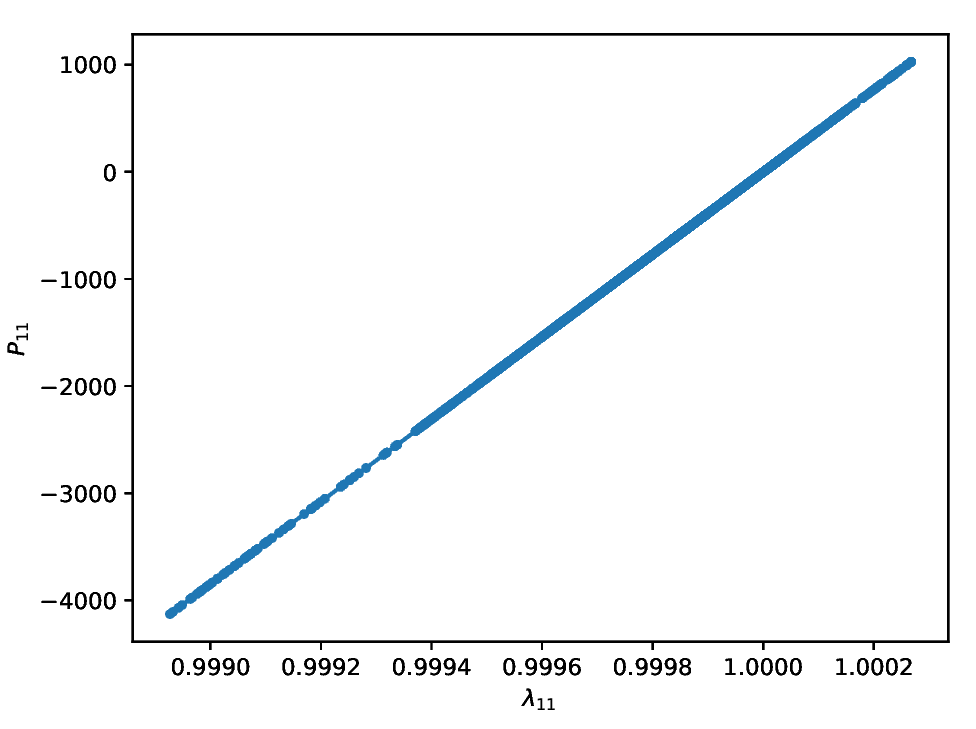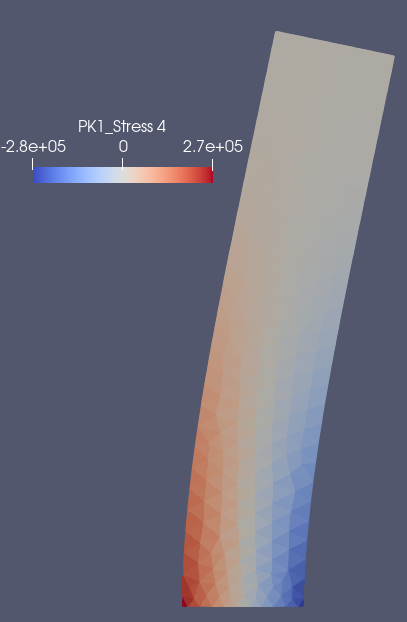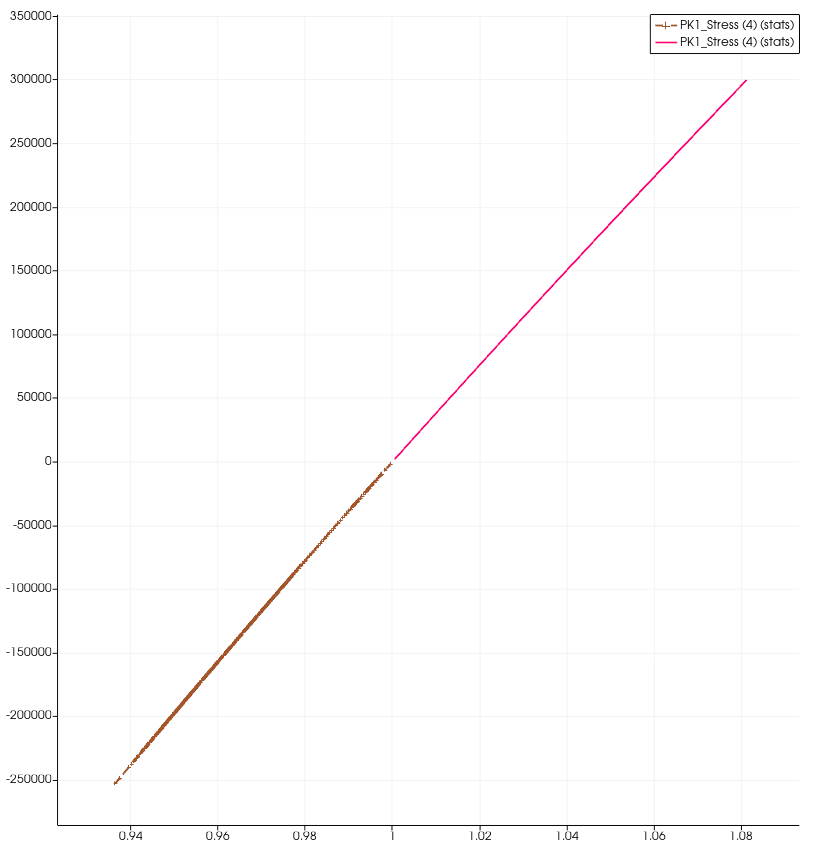For a FEM simulation of a Neo-Hook solid model, how do we know we are in the "regime" of nonlinearity of the solid? In other words, how do I know the hyperelastic material law is really used, and not just a needless additional computational cost because it can be modeled with a linear elastic Hook law. Following these Wikipedia figures for example, does this mean the nonlinearity really happens when we see a nonlinear relationship between $\lambda_{11}$ and $P_{11}$?
For my case/simulation, I chose the element with the biggest stress values, and I calculated the Lagrange Green strain tensor $\pmb{E}$ there, I computed the eigendecomposition to get the biggest eigenvalue $E_{11}$ and its associated eigenvector $\pmb{v}_{11}$. I then compute the stretch as : $\lambda_{11} = \sqrt{1+2E_{11}}$.
For the principal stress I compute : $P_{11} = \pmb{v}_{11} \cdot (\pmb{P}\pmb{v}_{11})$ where $\pmb{P}$ is the first Piola-Kirchoff stress. Should I expect to see a nonlinear relationship here? Is my definition of these quantities correct? In my case, I get something linear:

I used $W(\pmb{F}) = \frac{\mu_s}{2}\, (|\pmb{F}|^2 - 3 - 2\, \log(J)) $ with $\mu = 1923076$.

